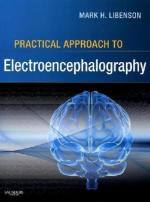|
This section contains 875 words (approx. 3 pages at 300 words per page) |

|
An electroencephalogram (EEG) is a graphic picture of the electrical activity of the brain. This visual image is created when electrodes are placed on a subject's scalp and connected by wires to an electroencephalograph, a devise which records the patterns of brain waves--the rhythmic changes in electric potentials in the brain--by tracing them with a fine, inked needle or nib onto a sheet of paper. EEGs are useful in diagnosing epilepsy, brain tumors, strokes, brain damage caused through head trauma, and other neurological conditions characterized by distinctive, abnormal brain wave patterns. They are also used in investigating psychiatric disorders such as schizophrenia, and in determining brain death--an important process for use in conjunction with organ donation for surgical transplant recipients. The founder of electroencephalography was Hans Berger (1873-1941), a German psychiatrist who made the first human EEG in 1924. Interested primarily in psychophysiology--that is, the relationship between the mind...
|
This section contains 875 words (approx. 3 pages at 300 words per page) |

|


